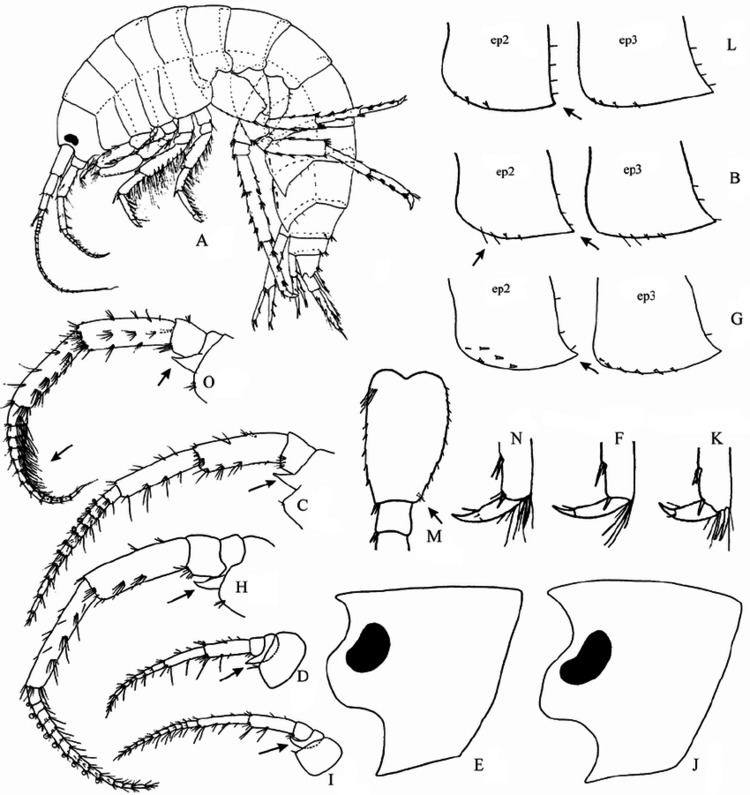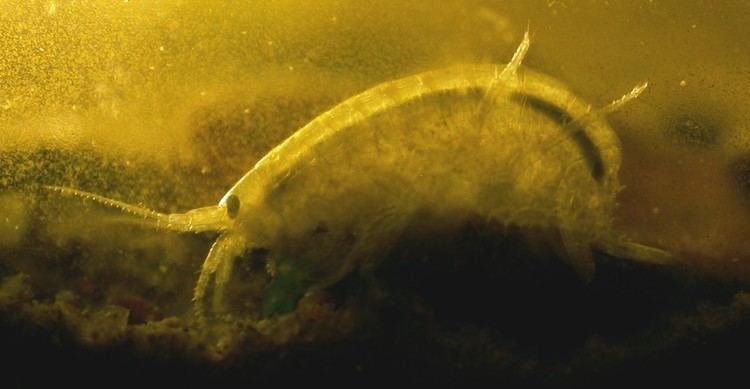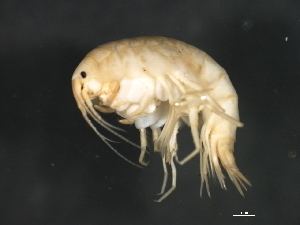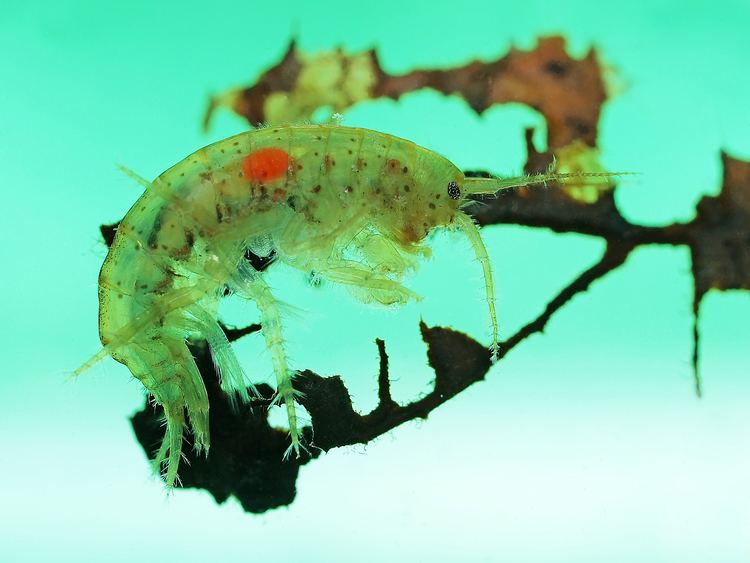Rank Species | Genus Gammarus Higher classification Gammarus | |
 | ||
Similar Gammarus, Amphipoda, Crustacean, Gammaridae, Gammarus pulex | ||
Gammarus lacustris
Description

G. lacustris is semi-transparent and lacks a webbed tail. It may be colorless, brown, reddish or bluish in color, depending on the local environment. It has seven abdominal segments, a fused cephalothorax, and two pairs of antennae. Unlike other crustaceans, amphipods lack carapaces and have laterally compressed bodies. Gammarids are referred to as scuds or sideswimmers. G. lacustris resembles a freshwater shrimp.
Life cycle

The female carries eggs in a brood pouch on its ventral side. G. lacustris in higher elevations were more likely to have fewer but larger eggs than those living at lower elevations. G. lacustris undergoes several molts and juveniles resemble the adult.
Ecology

G. lacustris plays an important role in many of the freshwater ecosystems that it inhabits. It is a detritivore and may also consume algae, mainly diatoms. It is considered an indicator species for the overall health and stability of the ecosystem.

As a small aquatic invertebrate G. lacustris is an important food source for many organisms. Birds, fishes, and some insects have been known to prey upon G. lacustris. It is often susceptible to parasitism, acting as an intermediate host for several parasites. It typically exhibits photophobic behavior, but when parasitized it may show photophilic behavior. A parasite often modifies its host's behavior. Parasites can affect the diel migration of G. lacustris, making it more visible and susceptible to predation. More mature parasites have greater effects on hosts.
Distribution

G. lacustris has been noted in northwestern Europe, Russia, and North America. Its precise range has yet to be defined. It can be found in shallow or deep lakes and in slow-moving rivers. It is more abundant in fishless lakes than in those with fish. Its distribution follows the thermocline in the water.



